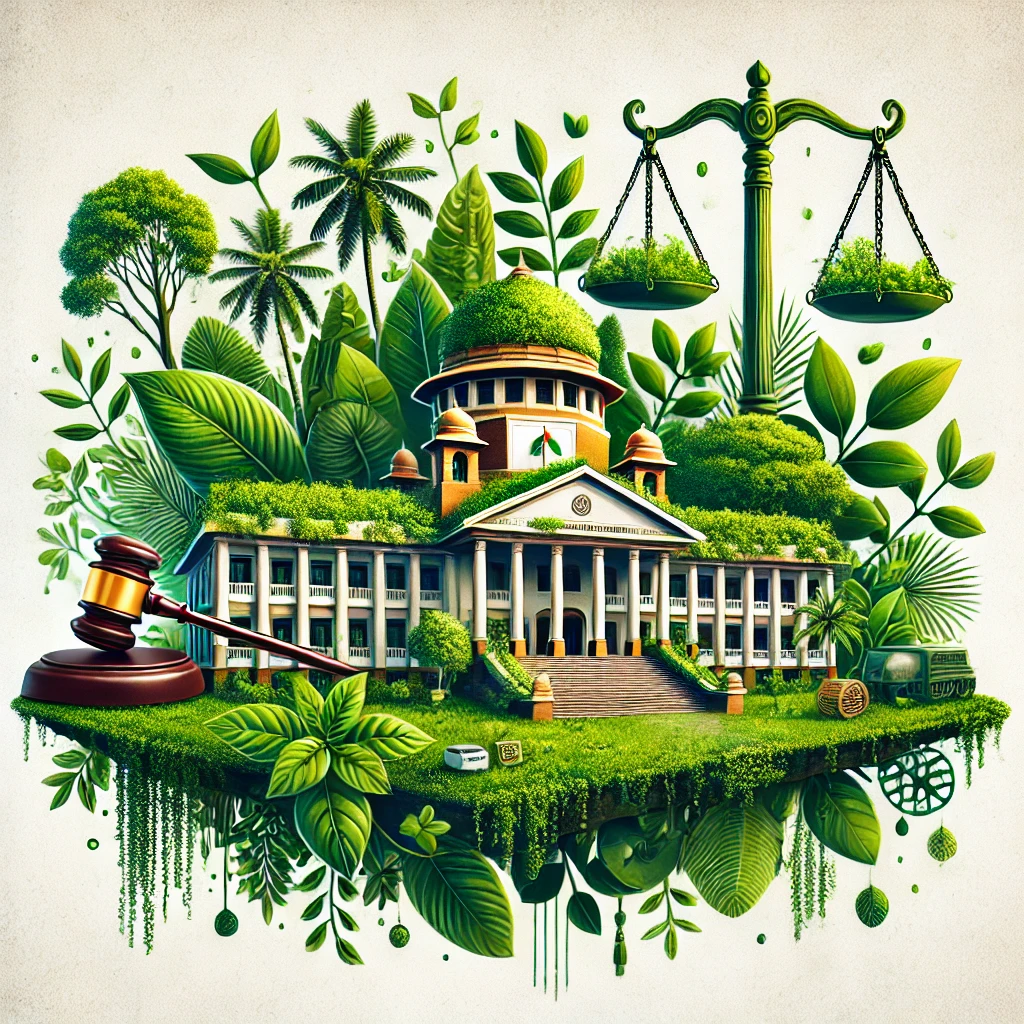Environmental laws at Tunisia
Tunisia has a variety of environmental laws and regulations designed to protect its natural resources, ensure sustainable development, and manage environmental challenges such as pollution, waste management, and biodiversity conservation. The legal framework for environmental protection in Tunisia includes a mix of national laws, regulations, and international agreements that guide the country's environmental policies and practices.
Here is an overview of key environmental laws and regulations in Tunisia:
1. The Environmental Protection and Improvement Law (1975)
The Environmental Protection and Improvement Law, passed in 1975, was one of the first comprehensive pieces of environmental legislation in Tunisia. The law laid the foundation for regulating pollution control, natural resource conservation, and the protection of public health.
Pollution Control: The law defines the parameters for controlling air, water, and soil pollution. It establishes regulations for industrial emissions, waste management, and the prevention of environmental degradation.
Environmental Management: It emphasizes the need for environmental impact assessments (EIA) for projects that may cause significant environmental harm.
Public Awareness: The law also promotes public awareness about environmental issues and encourages community participation in environmental conservation efforts.
2. The National Environmental Protection Agency (ANPE)
The National Environmental Protection Agency (ANPE), established in 1988, is the governmental body responsible for monitoring environmental protection efforts in Tunisia. It plays a central role in enforcing environmental laws, regulating pollution, and promoting sustainable development.
Monitoring and Enforcement: ANPE is tasked with monitoring environmental quality and enforcing laws related to air, water, and soil pollution. It oversees compliance with environmental permits and establishes pollution control standards.
Environmental Reporting: ANPE is also responsible for preparing environmental reports and conducting research to assess the country's environmental status.
3. The Forest Code (1983)
The Forest Code, passed in 1983, governs the management and conservation of forests in Tunisia, covering over 6 million hectares of forested land.
Forest Protection: The Forest Code sets out rules to protect Tunisia's forests from deforestation, illegal logging, and land degradation. It includes provisions for sustainable forest management practices.
Fire Prevention: The law contains regulations aimed at preventing and managing forest fires, which are a common issue in Tunisia's dry climate.
Biodiversity Protection: The Forest Code also addresses the conservation of biodiversity within forest ecosystems, protecting endangered species and critical habitats.
4. The Water Code (1975)
The Water Code is a critical piece of legislation that regulates the use, conservation, and management of water resources in Tunisia, a country that faces water scarcity due to its arid climate.
Water Resource Management: The law establishes guidelines for the sustainable use of surface and groundwater resources. It regulates water allocation for agricultural, industrial, and domestic purposes.
Water Pollution Control: The Water Code prohibits the discharge of pollutants into water bodies and establishes fines for polluters. It mandates that industries and municipalities treat wastewater before releasing it into rivers or the sea.
Water Conservation: The law encourages water conservation practices, particularly in agriculture, where efficient irrigation methods are promoted to reduce water wastage.
5. The Waste Management Law (2005)
The Waste Management Law (Law No. 96-41) focuses on regulating the collection, treatment, and disposal of waste in Tunisia, with a strong emphasis on reducing waste generation and promoting recycling.
Waste Classification: The law classifies waste into hazardous and non-hazardous categories, setting specific guidelines for the management and disposal of each type.
Recycling: The law encourages the recycling and recovery of waste materials, with policies that promote the reuse of materials like paper, plastic, and metals.
Waste Minimization: It includes measures to reduce the generation of waste at its source, particularly in industrial and commercial sectors.
Hazardous Waste: The law sets out stringent rules for the handling, storage, and disposal of hazardous waste, such as chemicals, batteries, and electronic waste.
6. The National Strategy for Sustainable Development (2002)
Tunisia’s National Strategy for Sustainable Development was introduced to guide the country towards more sustainable environmental, social, and economic development.
Sustainability Goals: The strategy outlines national goals for sustainable development, focusing on environmental protection, social equity, and economic growth.
Renewable Energy: The strategy promotes the use of renewable energy sources, particularly solar and wind, to reduce reliance on fossil fuels and mitigate climate change impacts.
Sustainable Agriculture: It encourages the adoption of sustainable agricultural practices that conserve water and soil and reduce the use of harmful chemicals.
7. The Environmental Impact Assessment (EIA) Law (1993)
The Environmental Impact Assessment (EIA) Law, established in 1993, mandates that an EIA be conducted for certain types of development projects that could have significant environmental impacts.
EIA Requirement: The law requires that environmental impacts be assessed and mitigated before projects such as large-scale infrastructure, industrial facilities, and mining operations are allowed to proceed.
Public Participation: The law ensures public participation in the EIA process, allowing communities and stakeholders to express their concerns about potential environmental impacts.
8. The Biodiversity and Natural Heritage Law (2004)
The Biodiversity and Natural Heritage Law was passed to protect Tunisia's rich biodiversity and natural heritage, particularly its flora and fauna.
Protected Areas: The law establishes national parks, nature reserves, and other protected areas to conserve biodiversity and safeguard ecosystems.
Endangered Species Protection: It includes provisions to protect endangered species and regulate hunting and fishing activities to prevent over-exploitation.
International Cooperation: Tunisia is committed to implementing the Convention on Biological Diversity (CBD) and other international agreements related to biodiversity conservation.
9. The Climate Change Law (under preparation)
Tunisia is in the process of developing a Climate Change Law to address the impacts of climate change more effectively. The law will be part of Tunisia's commitment to international climate agreements, such as the Paris Agreement.
Emissions Reduction: The law will set binding targets for greenhouse gas emissions reductions and outline strategies to achieve these targets.
Climate Adaptation: It will include provisions for adapting to climate change, such as improving water management, developing resilient infrastructure, and promoting sustainable agriculture.
Renewable Energy: The law will promote renewable energy sources, such as wind and solar, as part of Tunisia's efforts to transition to a low-carbon economy.
10. International Environmental Agreements
Tunisia is a party to various international environmental conventions and treaties, which shape its national policies and laws:
The Paris Agreement: Tunisia has committed to reducing its greenhouse gas emissions in line with the goals of the Paris Agreement.
The Convention on Biological Diversity (CBD): Tunisia has made commitments to conserve its biodiversity and sustainably manage its natural resources.
The Ramsar Convention on Wetlands: Tunisia is a signatory to the Ramsar Convention, which promotes the conservation and sustainable use of wetlands.
The United Nations Framework Convention on Climate Change (UNFCCC): Tunisia participates in global climate negotiations under the UNFCCC, aiming to mitigate and adapt to the effects of climate change.
11. The Tunisian Code of Urban Planning (2002)
The Tunisian Code of Urban Planning regulates land use and urban development in Tunisia, ensuring that cities and towns are built in an environmentally sustainable manner.
Sustainable Urban Development: The law promotes sustainable urban planning, encouraging the use of green building technologies and the reduction of environmental impacts in urban areas.
Environmental Considerations: The Code requires environmental considerations to be integrated into urban planning processes, including the protection of natural resources and the minimization of pollution.
Conclusion
Tunisia has established a solid legal framework for environmental protection, focusing on pollution control, waste management, biodiversity conservation, water and forest resource management, and climate change mitigation. The country’s environmental laws are complemented by efforts to integrate sustainable development principles into its policies and national strategies.
While Tunisia has made significant progress in environmental governance, challenges remain in areas such as enforcement, public awareness, and tackling emerging issues like climate change. However, Tunisia’s commitment to international environmental agreements and its growing focus on renewable energy and sustainability reflect a positive trajectory toward environmental conservation and sustainable development.




























0 comments